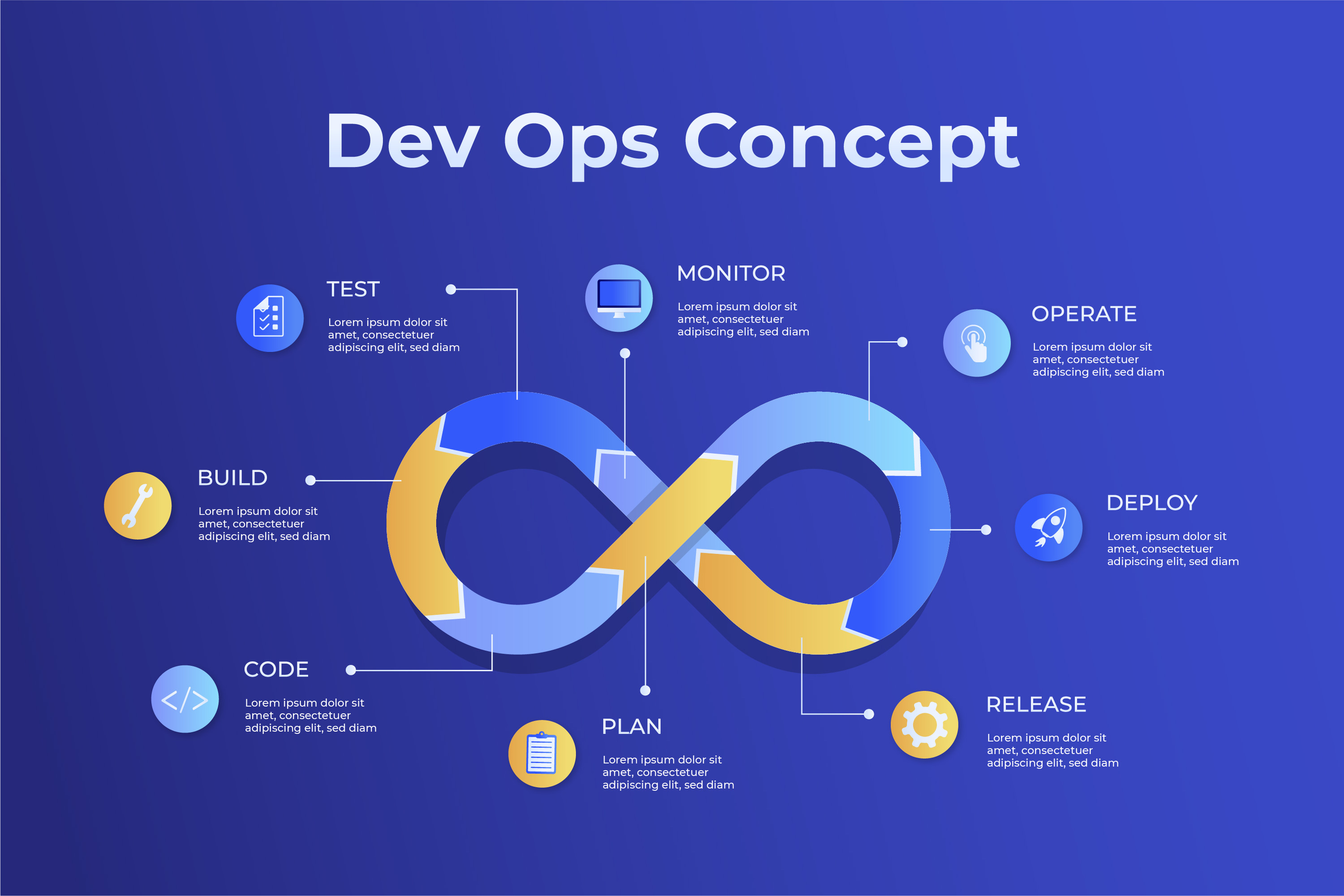Monitoring Kubernetes Clusters with Prometheus
 Mark Darby
Mark DarbyTable of contents
- The Necessity of Monitoring in Kubernetes Environments
- Setting Up Prometheus for Kubernetes
- Advanced Monitoring Techniques
- The Role of DevOps Services Companies
- Conclusion
- Frequently Asked Questions (FAQs)
- 1. What is Prometheus, and why should I use it for monitoring Kubernetes?
- 2. How do I install Prometheus on a Kubernetes cluster?
- 3. How can I configure Prometheus to collect metrics from my Kubernetes cluster?
- 4. What are some best practices for setting up alerts in Prometheus?
- 5. How do I visualize Prometheus metrics in Grafana?

Hey there! If you've ever had the pleasure (or headache) of managing a Kubernetes cluster, you know that keeping an eye on it is no walk in the park. That's where Prometheus steps in. In this article, I'm going to walk you through the process of setting up Prometheus to monitor your Kubernetes clusters effectively. We'll cover everything from installation to advanced monitoring techniques. So grab a cup of coffee, and let's dive right in!
The Necessity of Monitoring in Kubernetes Environments
Kubernetes is fantastic for managing containerized applications, but its dynamic nature presents unique challenges. Containers can spin up or down in seconds, and services can move across nodes without a hitch. This agility, while awesome, can make traditional monitoring tools fall flat.
That's why specialized tools like Prometheus are a game-changer. Prometheus is an open-source monitoring system with a dimensional data model, flexible query language, and powerful alerting capabilities. It’s designed to handle the highly ephemeral nature of Kubernetes clusters.
Why Monitoring is Crucial
1. Performance Optimization: Monitoring helps you pinpoint performance bottlenecks.
2. Resource Management: Keep track of your resource usage to avoid over-provisioning.
3. Proactive Troubleshooting: Get ahead of issues before they escalate into major problems.
4. Security: Ensure your cluster is secure by monitoring for unusual activity.
Setting Up Prometheus for Kubernetes
Alright, let's get our hands dirty. We'll start by installing Prometheus on your Kubernetes cluster.
Getting Started with Prometheus
Installing Prometheus on Kubernetes
First things first, you need to get Prometheus up and running. Here's a simple way to do it using Helm, a package manager for Kubernetes.
Install Helm: If you haven't already, install Helm. You can follow the official Helm installation guide.
Add the Prometheus Helm Chart:
bash |
Install Prometheus:
bash |
This will deploy Prometheus on your cluster with default configurations. You can check the status of your deployment with:
bash |
Configuring Prometheus for Kubernetes Metrics
Now that Prometheus is running, we need to configure it to scrape metrics from our Kubernetes components.
Service Discovery Configuration: Prometheus uses Kubernetes service discovery to find targets. You can configure this in the prometheus.yml file. Here’s an example configuration:
yaml |
Apply ConfigMap: Create a ConfigMap to hold your Prometheus configuration and apply it to your cluster:
bash |
Advanced Monitoring Techniques
Once you have Prometheus collecting data, you can enhance your monitoring setup with some additional tools and techniques.
Enhancing Monitoring with Additional Tools
Integrating Grafana for Advanced Visualization
Grafana is another open-source tool that works hand-in-hand with Prometheus, providing beautiful dashboards and visualization capabilities.
Install Grafana:
bash |
Access Grafana: Get the admin password and access Grafana:
bash |
Add Prometheus as a Data Source:
1. Open Grafana (http://localhost:3000), log in with the admin credentials.
2. Navigate to Configuration > Data Sources > Add data source.
3. Select Prometheus and enter your Prometheus server URL (e.g., http://prometheus-server.default.svc.cluster.local:9090).
Create Dashboards: You can now create custom dashboards or use pre-built ones from the Grafana community.
Alerting and Notification Setup
Alerting is crucial for proactive cluster management. Prometheus allows you to set up alerts based on your specific criteria.
Configure Alerting Rules: Define your alerting rules in the prometheus.yml file:
yaml |
Create the alerts.yml file with your alerting rules:
yaml |
Set Up Alertmanager: Prometheus uses Alertmanager to handle notifications. Install and configure Alertmanager:
bash |
Configure the alertmanager.yml file with your notification channels (e.g., email, Slack):
yaml |
Reload Configuration: Make sure to reload the Prometheus configuration after making these changes:
bash |
The Role of DevOps Services Companies
Optimizing Kubernetes Monitoring with DevOps Services
Monitoring a Kubernetes cluster is no small feat. It requires continuous tweaking and optimization. This is where DevOps service providers company can make a big difference. They bring expertise in setting up and maintaining comprehensive monitoring strategies that ensure your clusters run smoothly.
Why You Should Consider DevOps Consulting Services:
Expertise: DevOps experts have the know-how to optimize your monitoring setup, ensuring efficient observability.
Efficiency: They can implement best practices that save you time and resources.
Proactive Management: With a DevOps service company, you get proactive monitoring and issue resolution.
Customization: DevOps consulting services tailor solutions to fit your unique requirements.
Conclusion
Monitoring your Kubernetes clusters with Prometheus is essential for maintaining the health and performance of your infrastructure. From setting up Prometheus and integrating Grafana for visualizations to configuring alerting mechanisms, each step is crucial for a comprehensive monitoring strategy. Engaging with a DevOps service provider can further enhance your setup, providing expertise and efficiency.
Remember, a well-monitored cluster is a happy cluster. Keep an eye on those metrics, stay proactive, and ensure your Kubernetes environment is always in top shape. Happy monitoring!
Frequently Asked Questions (FAQs)
1. What is Prometheus, and why should I use it for monitoring Kubernetes?
Prometheus is an open-source monitoring and alerting toolkit designed specifically for reliability. It excels at collecting and storing metrics, providing real-time insights into your Kubernetes clusters. By using Prometheus, you can effectively monitor resource usage, performance, and identify potential issues before they escalate.
2. How do I install Prometheus on a Kubernetes cluster?
To install Prometheus, you can use Helm, a package manager for Kubernetes. First, add the Prometheus Helm chart repository, then install the Prometheus Operator with a command. This setup deploys Prometheus along with Grafana and Alertmanager for a comprehensive monitoring solution.
3. How can I configure Prometheus to collect metrics from my Kubernetes cluster?
Prometheus uses service discovery to find and scrape metrics from Kubernetes services. You need to annotate your services appropriately and create configurations for Prometheus to recognize these endpoints. This setup ensures Prometheus can automatically discover and monitor your Kubernetes components.
4. What are some best practices for setting up alerts in Prometheus?
Creating effective alerting rules is crucial for proactive monitoring. Define alerts based on your operational thresholds, like high CPU or memory usage. Prometheus’s Alertmanager handles these alerts, allowing you to configure notification channels such as email, Slack, or PagerDuty to stay informed about critical issues.
5. How do I visualize Prometheus metrics in Grafana?
Grafana, included with the Prometheus stack, provides powerful visualization capabilities. To integrate Grafana, add Prometheus as a data source and create dashboards to visualize key metrics. Grafana allows you to build comprehensive dashboards with various chart types, making it easier to monitor your cluster's health.
Subscribe to my newsletter
Read articles from Mark Darby directly inside your inbox. Subscribe to the newsletter, and don't miss out.
Written by
